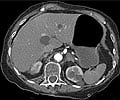New research from the University of Otago, Wellington, New Zealand has mapped the visibility of smoking in city streets has for the first time.

Data from observations across the downtown area were mapped by the researchers, producing a record of the street areas where the most smokers could be seen. They used mapping methods previously used for landscape ecology and archeology.
Lead researcher Dr Amber Pearson says that the methods developed through this research will help policymakers demonstrate the visibility of smoking in different areas, and provide scientific evidence for local authorities to advance smokefree outdoor policies.
Another of the researchers, Associate Professor George Thomson, says the results show the need for policies to reduce the normality of smoking:
"Smokefree outdoor areas help smokers to quit, help those who have quit to stick with it, and reduce the normalisation of smoking for children and youth. They also reduce litter, water pollution and cleaning costs for local authorities and ratepayers," Thomson says.
In Australia, North America and other places, local authorities are increasingly creating smokefree streets and promoting smokefree al fresco dining and drinking, he says.
Advertisement
Source-Eurekalert














